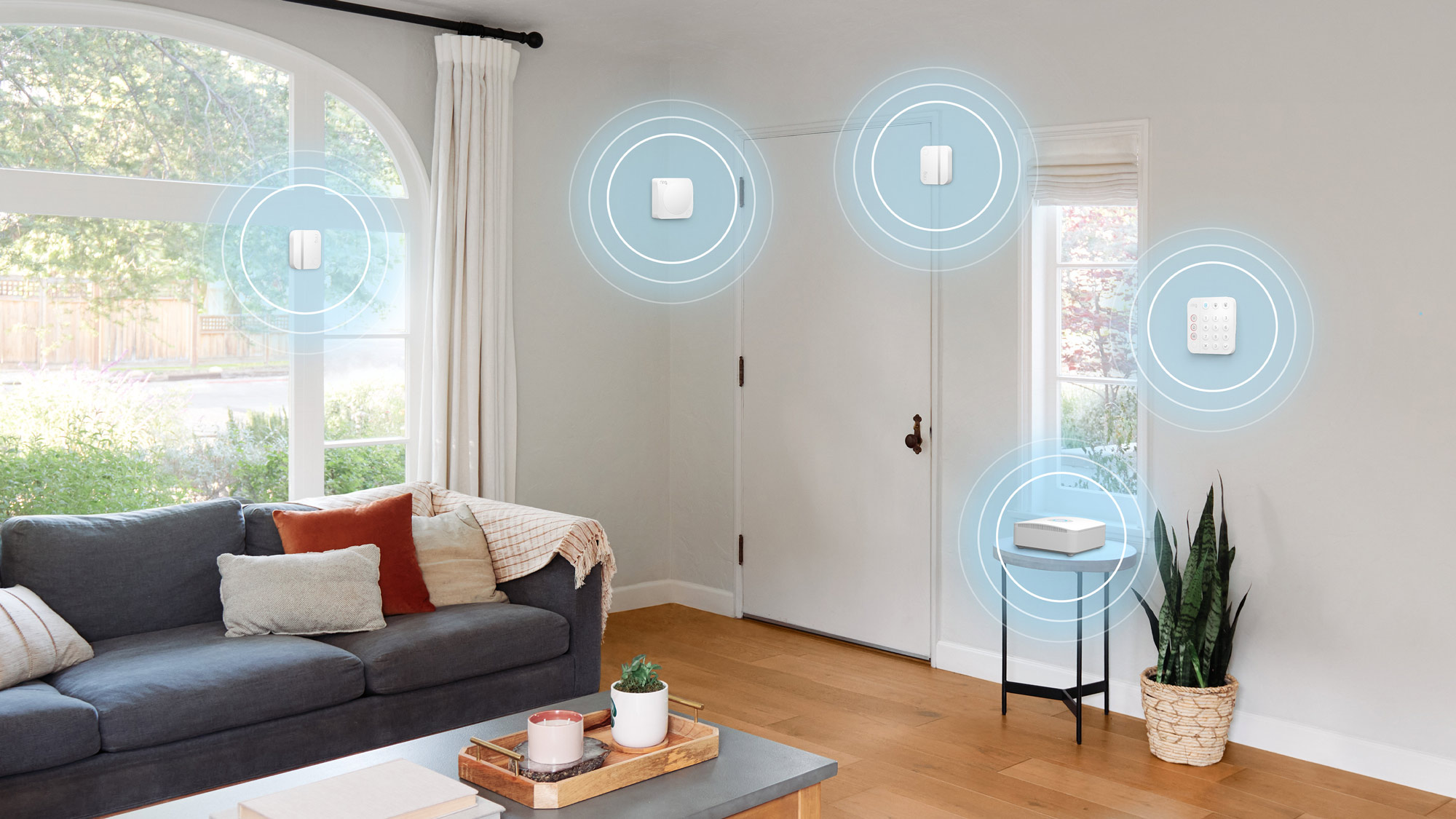Ring Alarm Pro supercharges security with Eero mesh Wi-Fi 6
Ring Alarm Pro remixes home security with built-in mesh Wi-Fi from Eero.

The Ring Alarm Pro updates the Ring Alarm home security system, Amazon's smart-device powered home-security system and subscription-monitoring program.
Ring Alarm Pro is a whole collection of devices, from door and window sensors to doorbell cameras and security cameras that can be placed around your property. When we first reviewed Ring Alarm in 2019, we praised the system's affordable protection and easy integration with other Ring devices, like Ring Video Doorbells.
- Amazon event: Everything we expect to see
- The best smart speakers you can buy today
With the Ring Alarm Pro update, the home security system is significantly upgraded by merging with an Eero Wi-Fi 6 mesh router, giving you whole-home Wi-Fi with speedy connectivity and network security as well as security for your physical home.
The combination should protect your home inside and out and give you a great Wi-Fi experience that also serves as the backbone for all of your Ring devices.

Ring Alarm Pro adds Eero mesh Wi-Fi 6
The addition of Eero Wi-Fi 6 hardware is a huge improvement. It ties your ecosystem of Ring products to your home network, and allowing tighter integration between home security and network security.
In our recent review of the Eero Pro 6, we praised its performance and features, from the easy setup to the hassle-free networking and range that lets it cover the entire home.
Although Amazon hasn't specified what kind of hardware is used for the Eero half of the Ring Alarm Pro, it looks a lot like the Eero Pro 6 based on its features, design and naming.
Sign up to get the BEST of Tom's Guide direct to your inbox.
Get instant access to breaking news, the hottest reviews, great deals and helpful tips.
Backup data, backup power
Because even the speediest internet connection can go down, you can add backup internet access to the Ring Alarm Pro ($20 per month), with cellular data included (3GB per month) with a Ring Protect Pro subscription. Extra data is available for $3 per gigabyte used.
Optional security features include security monitoring by Ring's own professional teams, additional Eero Secure security features such as content filtering, ad blocking, and threat protection, and the addition of Alexa Guard Plus, an emergency helpline that uses Alexa's hands-free voice assistant to call for help.
Data is not all that gets it back up, as you can get up to four Ring Power Packs to provide offline power for your security system in the event of a power outage. Between the power packs and the cellular data, you should be able to maintain 24/7 security monitoring even in the event of full power and internet outage.
Ring Edge brings video home
An additional new feature that should ease some privacy concerns is Ring Edge, which allows for local video storage for your camera-enabled Ring devices.
For a very long time, Ring has been a cloud-based service, sending video back to Amazon servers for storage and processing. But with Ring Edge and the integrated mesh network of the added Eero hardware, the Ring Alarm Pro has local storage capability built in. With 64GB of local storage, you can store approximately 47 hours of video, all without sharing the footage with anyone else.
Ring Alarm Pro: Pricing and availability
The Ring Alarm Pro is available for pre-order today on both Amazon.com and Ring.com. According to product pages, preorders will ship on November 3rd.
The Ring Alarm Pro starts at $249.99 for the Alarm Pro Base Station with built-in Eero Wi-Fi 6 router.
The 8-piece Alarm Pro Security Kit includes the Ring Alarm Keypad, 4 windows or door sensors, one motion detection module, and a one Eero range extender, for $299.99.
A 14-piece adds a second keypad, 4 additional window/door sensors and a second motion detector, all for $379.99.
Subscriptions to Ring Protect Pro for monitoring, data backup and other optional features are available for $20 per month, per location — only one home per subscription.
Brian Westover is currently Lead Analyst, PCs and Hardware at PCMag. Until recently, however, he was Senior Editor at Tom's Guide, where he led the site's TV coverage for several years, reviewing scores of sets and writing about everything from 8K to HDR to HDMI 2.1. He also put his computing knowledge to good use by reviewing many PCs and Mac devices, and also led our router and home networking coverage. Prior to joining Tom's Guide, he wrote for TopTenReviews and PCMag.

